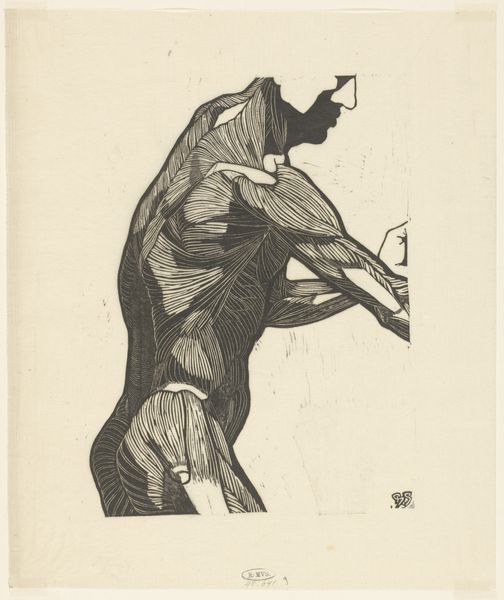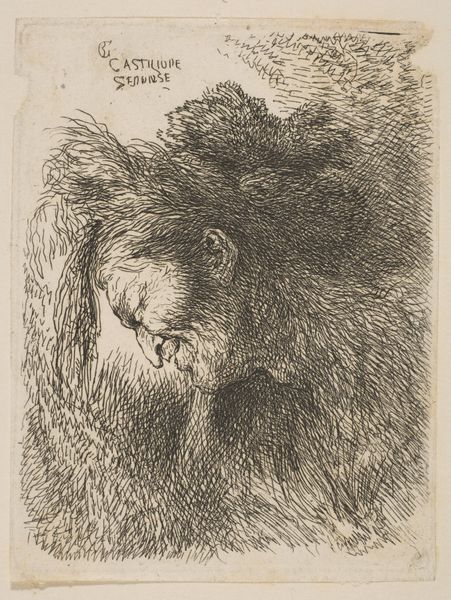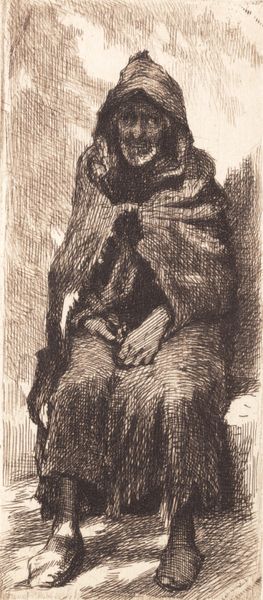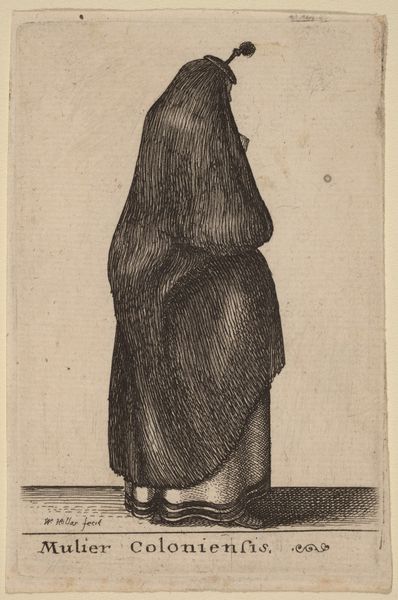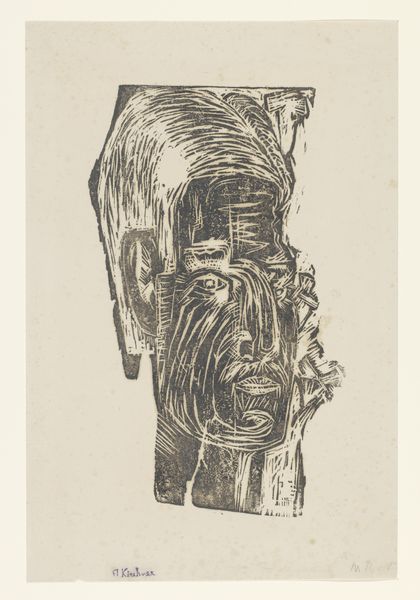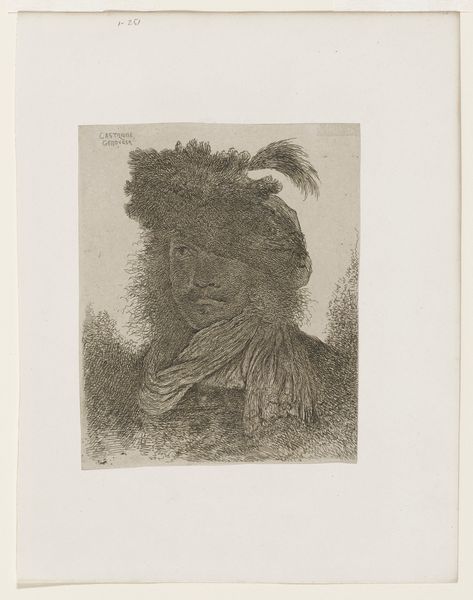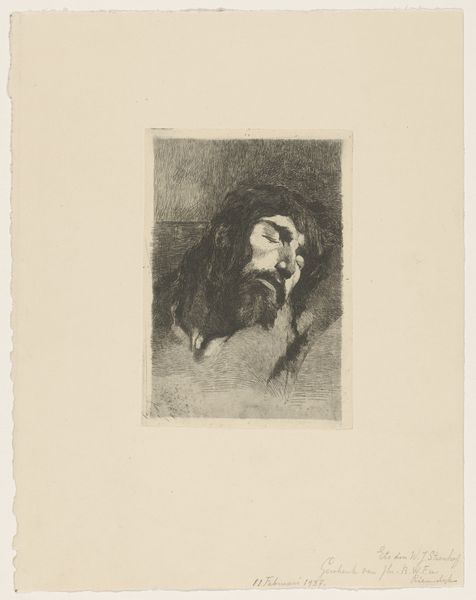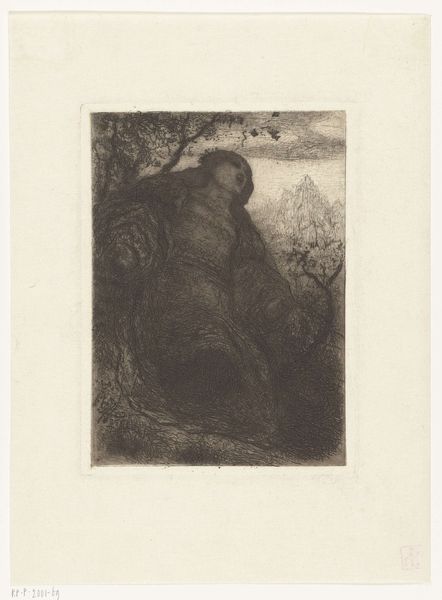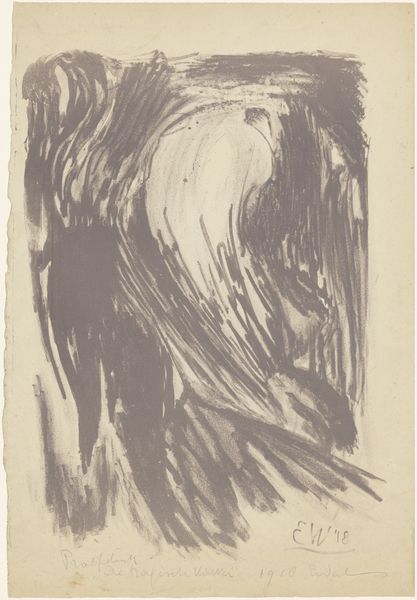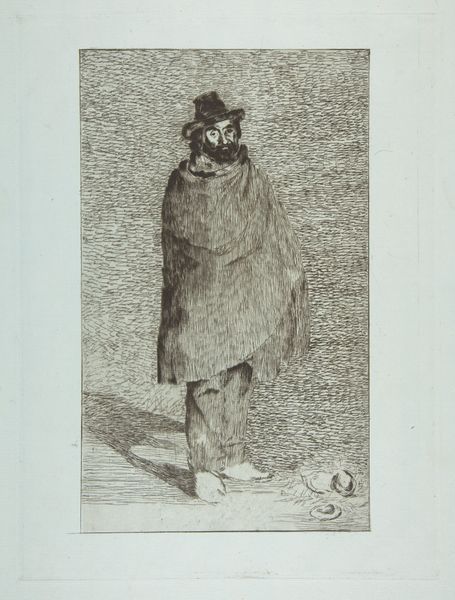
drawing, pencil
#
portrait
#
drawing
#
figuration
#
pencil drawing
#
pencil
#
symbolism
#
portrait drawing
#
academic-art
Dimensions: height 378 mm, width 220 mm
Copyright: Rijks Museum: Open Domain
Editor: We’re looking at "Staande vrouw met armen omhoog" or "Standing Woman with Arms Raised," a pencil drawing from around 1895-1898 by Georges Rochegrosse. The woman’s face is shadowed, and she’s standing against this frenetic backdrop of dark, slashing lines. What do you see in this piece, professor? Curator: Indeed. Notice how Rochegrosse masterfully employs contrasting light and shadow. The formal composition prioritizes tonal relationships over explicit narrative. What does the angularity of the hatching strokes evoke in terms of emotional or psychological weight? Editor: It definitely feels intense, almost claustrophobic. The way he uses the pencil, so rough and immediate, gives it a very visceral feel. Curator: Precisely. Consider the interplay between the solid mass of her form and the surrounding void. The artist invites a semiotic reading of this contrast – where the implied solidity of form signifies inner strength, in contrast to the chaotic indeterminacy that frames it. Note too, how the upward gesture is not a signal, but rather one of introspection, thereby questioning our desire for narrative clarity. How might the restricted palette reinforce this ambiguity? Editor: I guess the monochrome keeps it focused on the form and that tension you were talking about. It removes distractions that colour might add. Curator: Just so. Stripped bare, it becomes clear the success of the drawing lies in its technical virtuosity. Rochegrosse doesn’t provide us with narrative comfort; the composition relies on visual language to invite emotional involvement. Editor: It's interesting how the lack of detail pushes you to look closer at the pencil strokes themselves. Curator: Absolutely. And this, precisely, is why the study is successful. Editor: Thanks, seeing the technique and structure highlighted really brings it to life.
Comments
No comments
Be the first to comment and join the conversation on the ultimate creative platform.
